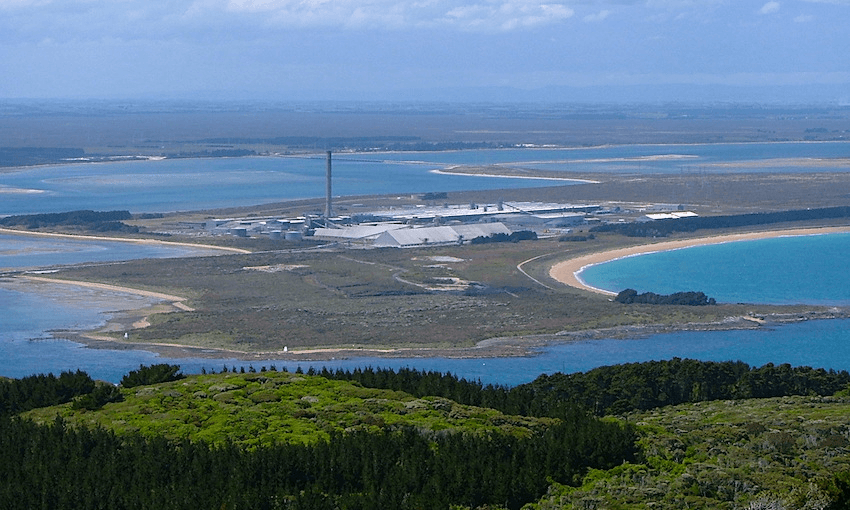After almost 50 years, New Zealand’s only aluminium smelter is due to close next August. We take a look at what it means for the economy and the environment.
What’s all this then?
Multinational metal and mining corporation Rio Tinto has today announced it is planning to close the Tiwai Point aluminium smelter in Southland by August 2021, after a strategic review found the business is “not economically viable”.
The smelter – a joint venture between Rio Tinto and Japanese company Sumitomo Group, together known as New Zealand Aluminium Smelters (NZAS) – is one of the largest employers in Southland and contributes around $400m every year to the local economy. Its closure will be a massive blow to the Southland community, and is expected to directly affect 1000 jobs and a further 1,600 jobs which are indirectly connected with the smelter.
Rio Tinto Aluminium chief executive Alf Barrio said it wasn’t a decision the company made lightly and was aware of the significant impact it would have on the Southland community.
Why is it closing?
While the smelter earned Rio Tinto a $46m loss in 2019, the main reason was that NZAS was unable to secure a power contract that would enable the operation to be competitive and profitable. It had therefore given “Meridian Energy notice to terminate the power contract, which will end in August 2021, when the wind-down of operations is expected to complete”.
With the global price of aluminium falling and the smelter’s electricity transmission costs rising from $40 million in 2008 to $65m last year, the company said it was no longer commercially viable to continue the operation.
“It is very unfortunate we could not find a solution with our partners to secure a power price reduction aimed at making NZAS a financially viable business. We will therefore terminate the power contract and move to close the operation,” Barrio said.
Haven’t we heard this before?
The potential closure of Tiwai Point has been regularly covered in the New Zealand media for the past decade. Rio Tinto has a history of hard line haggling with the government for financial assistance and subsidies to keep the smelter operating, often using its status as an economically valuable asset and significant employer as leverage.
In 2013, the National government paid NZAS a one-off $30m tax-free subsidy in order to keep the smelter running. The subsidy was widely criticised by opposition members, who called it unnecessary corporate welfare considering Rio Tinto posted a $3.7b profit the following year.
However, Bill English, the then-finance minster in whose electorate the smelter was located, said the subsidy was essential to save 800 jobs. “Anyone who can take a business away has its community over a barrel and has its workforce over a barrel,” he said.
What’s this got to do with electricity?
Tiwai Point’s operations require a monstrous amount of power, using approximately one third of the total electricity consumed in the South Island and 13% of the total electricity nationwide.
Its location and opening in 1971 coincided with the construction of the Manapouri Power Station, which is operated by Meridian Energy and from which it draws most of its electricity. NZAS has frequently battled for better deals with Meridian; in 2013 it managed to negotiate its power contract with Meridian to pre-2013 price levels and in 2015 it managed to secure another supply agreement for 572MW of power.
NZAS accounts for 39% of Meridian’s contracted sales by volume, and it’s closure is expected to have a significant effect on New Zealand’s electricity market.
And what about the environment?
Despite the economic blow, the closure of Tiwai Point is likely to celebrated by environmentalists due to its impact on the local environment. The smelter has been criticised for producing thousands of tonnes of toxic waste, which has been stockpiled in warehouses at Mataura and Awarua near Invercargill after the previous waste processor went into liquidation.
The smelter has also been criticised for its excessive energy consumption, which comes from renewable sources that critics argue could be better used elsewhere.
Finance minister Grant Robertson today said Tiwai Point is regularly subsidised through Emissions Trading Scheme allocations of over $48m per year. Last year the late environmentalist Jeanette Fitzsimons wrote that would amount to $1b by 2030 if the smelter remained open until then.
“There are better uses for a billion dollars than subsidising a rich multinational,” she wrote.
Dr Anna Berka, lecturer in management, entrepreneurship and innovation at Massey University said the closure could be a good thing for emissions as it would allow the Huntly Power Station to close down sooner.
However, there is also concern that the lost low-carbon aluminium production in New Zealand will simply be replaced by coal-fired plants in Asia, ultimately contributing to more carbon emissions globally.





